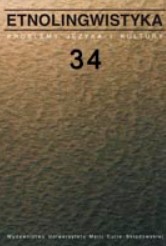The semantic development of Germanic *steur-: poles, rudders, anchors, withies and retractable keels
The semantic development of Germanic *steur-: poles, rudders, anchors, withies and retractable keels
Author(s): Eldar HeideSubject(s): Lexis, Semantics, Historical Linguistics, Comparative Linguistics
Published by: Wydawnictwo Naukowe Uniwersytetu Marii Curie-Sklodowskiej
Keywords: Iron Age sailing; rowing ship; rudder; steering; etymology; Wörter und Sachen;
Summary/Abstract: This article discusses the relationship between the Old Germanic words for ‘a rudder’: Old Norse stýri / stjórn, Old High German stiura, Old English steor, etc., and Old Norse staurr, ‘a (pointed) stake’. These words in all probability stand in an ablaut relation to each other but it is difficult to tell what the cognitive link might be. The standard answer is that a stýri etc. originally was a beam/log/pole, understood as something similar to an oar, used to steer a ship. But it is difficult to steer a ship with a beam, log or pole, and a steering oar does not look much like these things. My suggestion is that a stýri etc. originally was more or less the same as a staurr, namely a pole which goes down into a substance that provides resistance and which thus anchors something. On the earliest depictions of ships with stýris etc. in Northern Europe, which are rowing ships, it seems that the function of the stýri was not to give the ship direction but to prevent it from drifting sideways on the water. On a stjóri ‘primitive anchor’ (Old Norse), the decisive element is a pointed transverse at the bottom end which digs into the ground. Similarly, a stjóri in Faroese is a rope or fastening whereby people and goods are pulled ashore through the surf. Norwegian stjor (e) also have meanings that are fundamentally similar to this. The essential argument for the proposed understanding is that it allows stýri/stjórn/stiura etc. to have an original meaning close to that of Old Norse staurr, which the etymological relatedness demands. Our semantic complex surrounding to steer, steuern, etc., probably co-evolved with the directional stýri etc. that accompanied the evolution of the Northern European sailing ship during the Merovingian age.
Journal: Etnolingwistyka. Problemy Języka I Kultury
- Issue Year: 34/2022
- Issue No: 34
- Page Range: 167-179
- Page Count: 13
- Language: English

